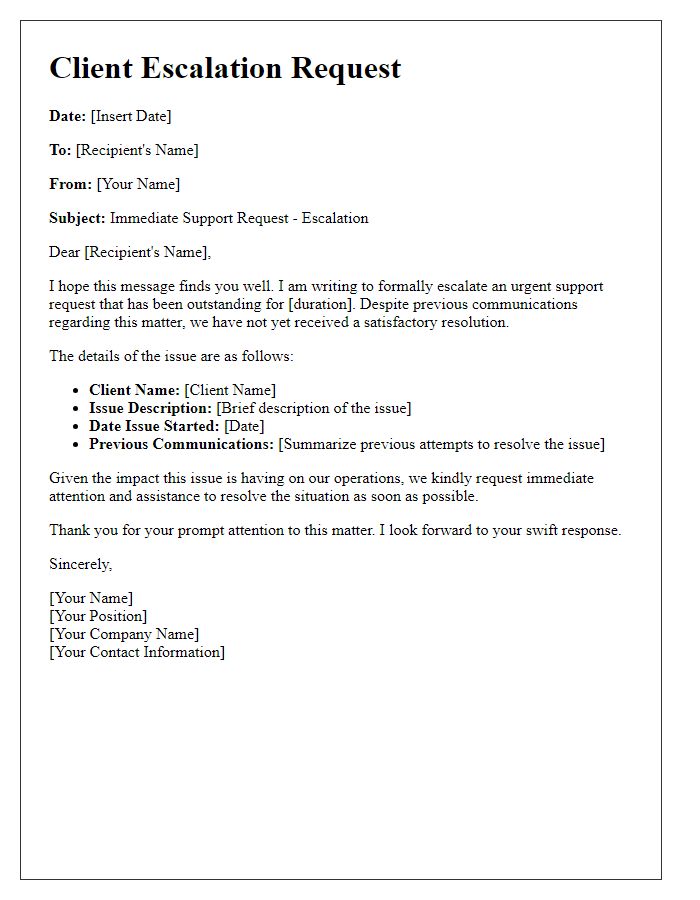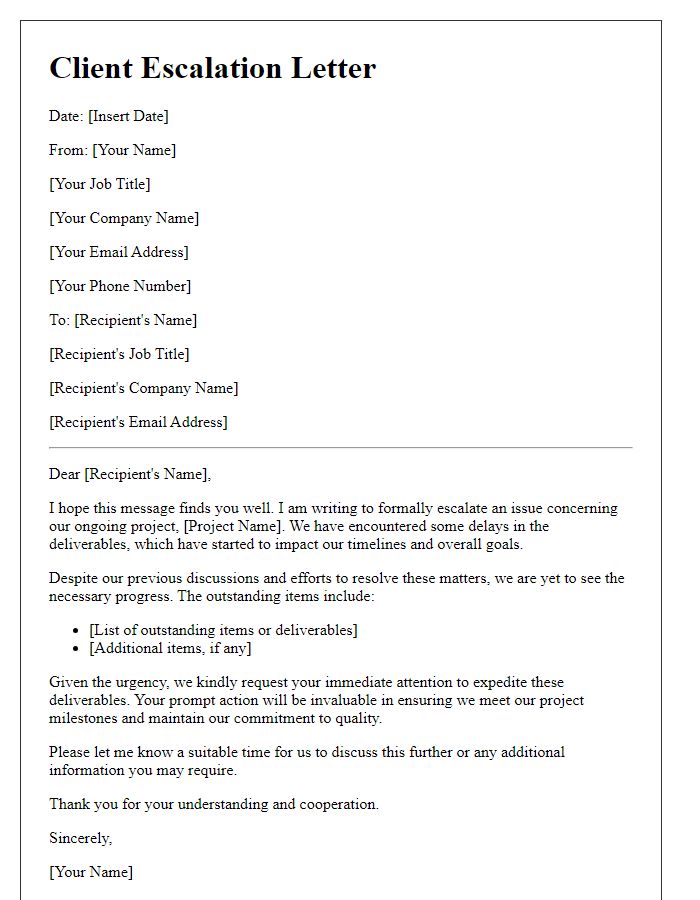Navigating client escalations can often feel like a daunting task, but having a well-structured resolution procedure in place can make all the difference. In this article, we'll break down a streamlined letter template designed to facilitate clear communication and effective problem-solving with clients facing issues. By following this guide, you'll not only enhance client satisfaction but also foster stronger relationships built on transparency and trust. Ready to learn more about the steps involved? Keep reading!

Clear Subject Line
The escalation resolution procedure serves as a critical framework designed to address client concerns effectively and efficiently. Each case should begin with a clear subject line indicating the nature of the issue, such as "Escalation: [Specific Issue] - [Client Name or Account Number]." This format assists in prioritizing urgent matters, ensuring prompt attention from the relevant teams, such as customer service, technical support, or account management. Follow-up timelines, typically within 24-48 hours, should be established to keep clients informed and reassured. Documentation, including timestamps and detailed notes, is essential throughout the process, enabling transparency and accountability. Regular communication updates, scheduled weekly or bi-weekly, offer clients insight into the resolution status and next steps. Ultimately, this structured approach aims to enhance client satisfaction and maintain long-term relationships.
Formal Greeting
In client escalations, timely resolution procedures are essential for maintaining business relationships. Escalation processes often involve a formal acknowledgment of issues raised by clients, which may include complaints regarding service quality or product defects. Initial contact typically occurs via email or phone, necessitating a structured greeting that establishes professionalism. A formal greeting serves as the foundation for effective communication, ensuring that the recipient feels valued and understood during the resolution process. It's critical to include the client's name and express empathy regarding their concerns, setting a positive tone for subsequent discussions.
Issue Acknowledgment
Efficient issue acknowledgment is crucial in client escalations for effective resolution. Clients should receive prompt communication following their escalation, illustrating recognition of their concerns and outlining next steps. Specific details regarding the nature of the issue, such as frequency, impact, and associated account information, must be included for clarity. A structured timeline may be presented, detailing anticipated response times for initial investigation and expected resolution dates. Additionally, the acknowledgment should ensure the client understands that their issue is being prioritized within the organization, engaging relevant teams, like customer support and technical resolution, to maintain transparent feedback loops. This process not only fosters trust but also ensures that clients feel valued and reassured amid the challenge.
Apology and Empathy
Client escalations often require a thoughtful approach. The escalation process should begin with a sincere apology, recognizing the client's frustrations regarding their experience. Empathy plays a crucial role in communication, allowing acknowledgment of the client's feelings and providing reassurance that their concerns are valued. Effective resolution procedures may include personalizing the response, such as addressing the client by name, and specifying the issue at hand--like order delays, service interruptions, or product defects. Offering a clear action plan, such as a follow-up within 24 hours or compensation options, demonstrates commitment to resolving the issue. Summarizing the main points, confirming understanding, and assuring continuous support can help rebuild trust and enhance client relationships.
Resolution Steps and Timeline
Client escalations often require a structured resolution process to ensure timely and efficient responses. Each escalation may begin with initial assessment within 24 hours, where issues are categorized based on severity (critical, high, medium, low). Following this, dedicated teams engage in root cause analysis, typically taking 48 hours, to determine the underlying problem. Progress updates are communicated to the client weekly to maintain transparency. The resolution timeline varies depending on the complexity, generally ranging from 1 to 5 business days, with a final review and feedback session scheduled upon resolution. Documentation of the entire process ensures compliance and aids in future prevention strategies.
Letter Template For Client Escalations Resolution Procedure Samples
Letter template of client escalations addressing service dissatisfaction

Letter template of client escalations for feedback on service improvements

Letter template of client escalations in response to unresolved complaints











Comments